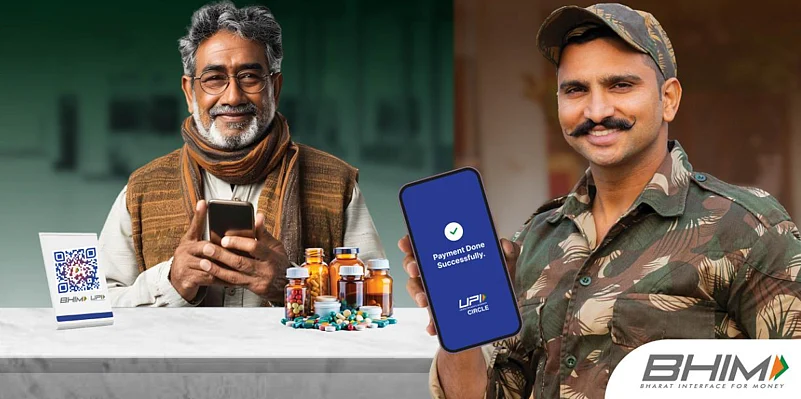NPCI BHIM Services Limited (NBSL), a subsidiary of the National Payments Corporation of India (NPCI), on Tuesday, April 23 launched UPI Circle, a new feature. It allows users to assign payment authority to five family/public members and provides control over every transaction in real-time.
Under UPI Circle, the primary account holder would be able to give permission to secondary users, family members or caretakers, to make payments on their behalf. However, each of those transactions must still be approved via the primary user’s UPI PIN, maintaining oversight and security.
This feature is aimed to assist sections of the population that might find it difficult to make digital payments, such as old age and young people. For example, elderly users can have a family member handle payments for them while every transaction is vetted in real time. In a similar way, parents can allow children to manage costs such as tuition or everyday needs while keeping complete control.
People who do not have a UPI-linked bank account can also make use of it. It allows users to request payments via a trusted user capable of approving the payment transaction. It’s a step meant to empower financial inclusion across ages and access levels.
The feature will only work if the latest BHIM app (version 4.0.2) is downloaded and the consumer goes to the UPI Circle section. They then add a secondary user by entering their UPI ID or scanning a QR code. At setup, delegation settings (such as requiring approval for every payment) can be customised.
Higher levels of delegation will be bound by transaction limits. In the full delegation model, per-month limits up to Rs 15,000 and per-transaction limits of Rs 5,000 may be set by users. In partial delegation mode, the daily UPI limit of the primary account is applicable.
The new mechanism does not necessitate that the secondary user has a separate UPI-linked bank account, which makes it particularly beneficial for dependents or other persons not having direct access to financial technology tools, according to NPCI.
UPI Circle, now available to all users on the redesigned BHIM app, affirms India’s commitment to secure and inclusive digital financial services.
How to use UPI Circle on BHIM
Step 1: Download the New BHIM app (Version 4.0.2) from the Play Store or App Store
Step 2: Launch the BHIM app, and you can navigate to the UPI Circle section from the home screen or through the menu
Step 3: Click on ‘Add Secondary User’ and give their UPI ID or scan their QR code
Step 4: Choose the Delegation Type ‘Approve every payment’ (Partial Delegation)’
When the primary user is absent, the SU is qualified as a secondary user:
Step 5: The secondary user will get an invitation.
Step 6: After accepting the invite, your friend will be able to make payments using your account, while you will get a real-time notification to approve the payment through the BHIM app.
Who Can Benefit From UPI Circle?
UPI Circle is supposed to be useful in real-world scenarios where it's convenient to share digital payments, but security is still a top priority.
Here are a few examples, as per the official website of NPCI:
For a senior citizen's daughter, who is handling payments for her elderly mother, can sign her up as a secondary user. The mother can execute orders on its own, and the daughter just releases them when necessary. This provides freedom for the parents without compromising on safety.
For Children: A parent may allow a child to make the daily school or tuition payments. The child makes the request and the parent authorizes it in real time, teaching financial responsibility while maintaining certain boundaries.
For Household Help: A family could facilitate a domestic worker to pay an emergency grocery or utility bill. The helper doesn’t need his or her bank account, only the BHIM app through which they can send requests that the employer can immediately approve.
For Medical Emergencies - For when the elderly or dependents have to pay at a pharmacy or hospital a trusted family member to authorise the transaction remotely - all without any bank details being shared.
















